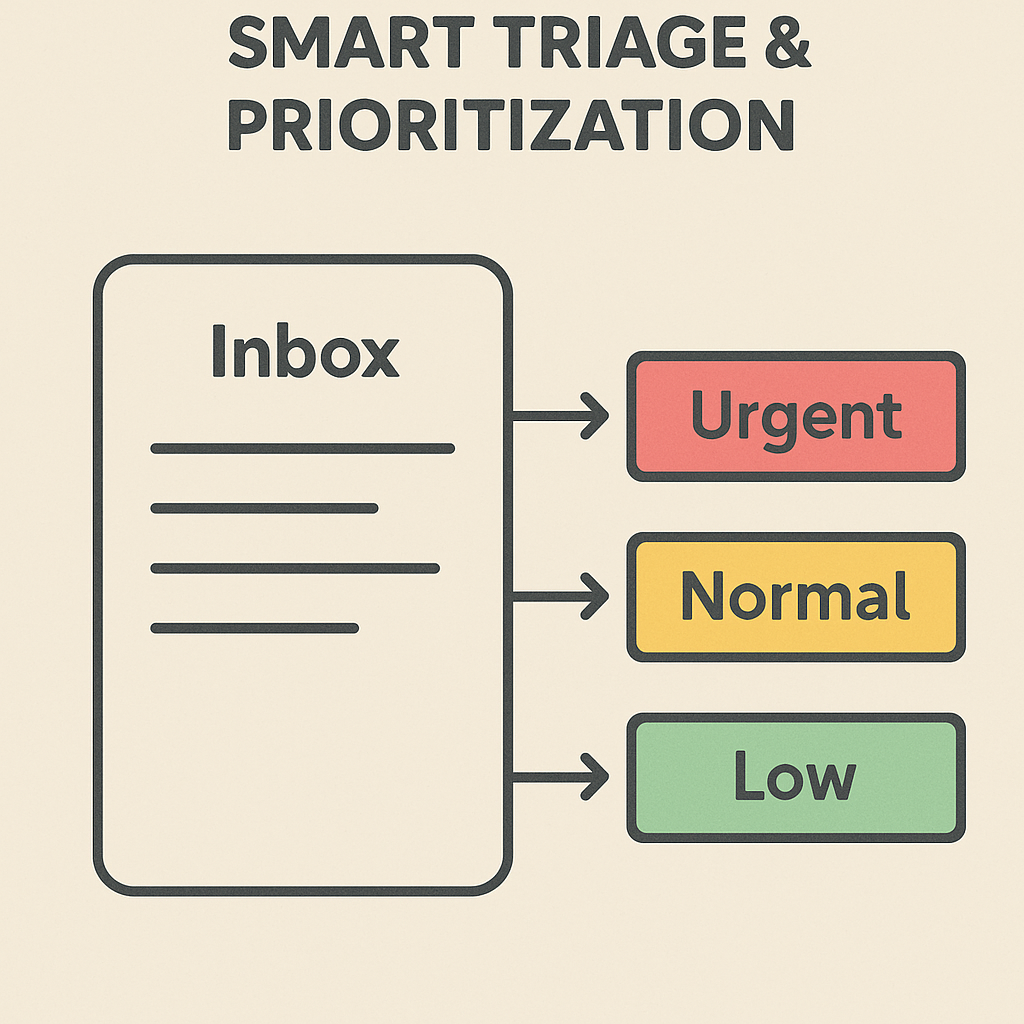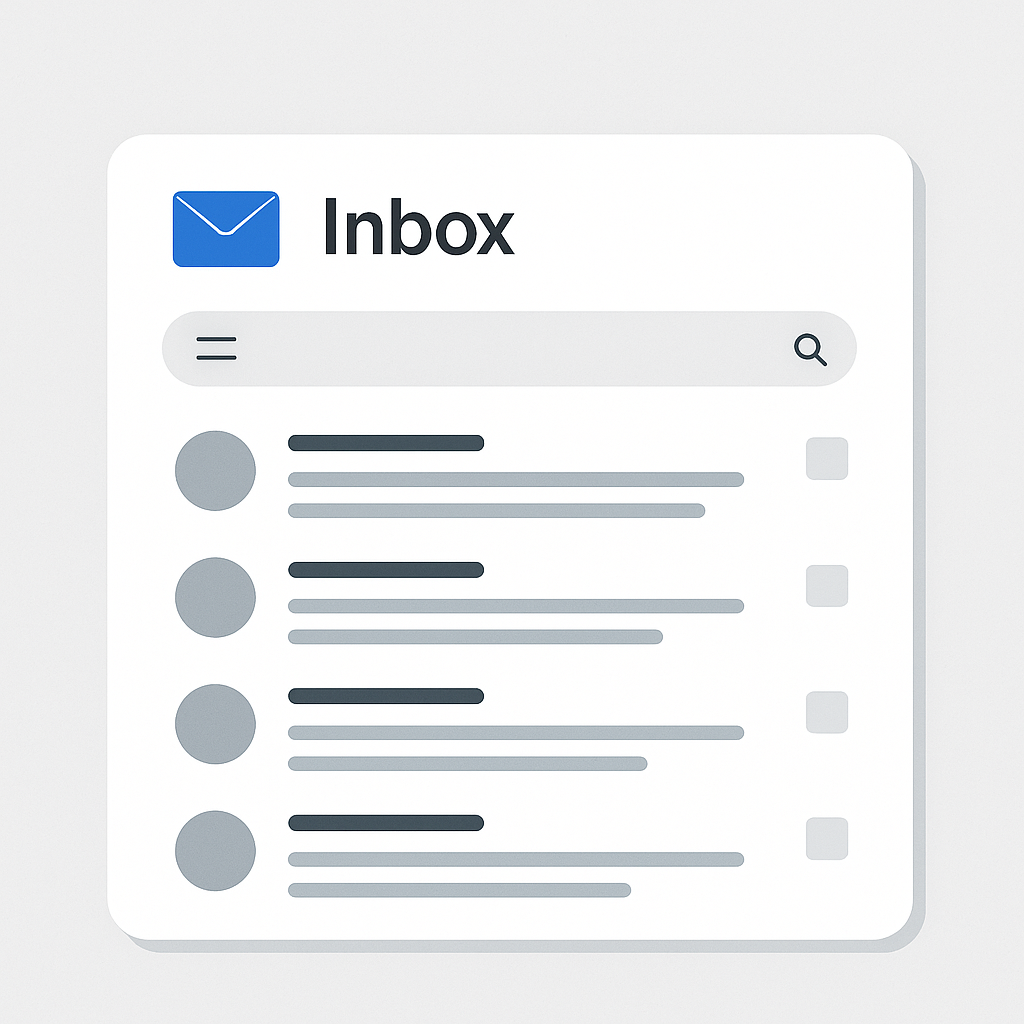Conquer My Inbox: Smart Triage & Prioritization

Is your inbox a black hole of unread messages, a constant source of stress, and a drain on your precious time? You're not alone. In today's hyper-connected professional world, email overload is a pervasive problem, impacting productivity and mental well-being for countless individuals. For many, my inbox isn't just a communication tool; it's a digital battlefield where important tasks get lost amidst a sea of notifications, newsletters, and requests. The sheer volume can leave even the most organized professionals feeling overwhelmed, making it challenging to focus on high-impact work. But what if you could transform this digital chaos into a streamlined, efficient system? This article will dive deep into smart triage and prioritization techniques designed to help you conquer my inbox, boost your email productivity, and reclaim your workday.
The Overwhelmed Inbox: Understanding the Problem
The modern professional inbox is often a symptom of a larger issue: the sheer volume and velocity of digital communication. Professionals today can receive dozens, if not hundreds, of emails daily. This constant influx creates significant cognitive load. Each email demands a moment of attention, a decision, and often, a response. This constant context-switching between tasks and emails fragments attention, diminishes deep work capabilities, and significantly slows down overall progress. The result is not just lost time, but also increased stress, anxiety, and a feeling of being perpetually behind.
This digital deluge affects professionals across all industries and roles. Executives might find themselves buried under strategic communications and stakeholder updates. Sales and marketing professionals juggle prospect outreach, client management, and campaign performance reports. Remote workers often rely on email for crucial team coordination, missing the informal water cooler chats that can clarify tasks. For all of them, my inbox becomes a bottleneck, a place where important information can easily be missed, leading to missed opportunities or critical errors. As highlighted by Campaign Refinery, "Email overload is a pervasive problem, impacting productivity and increasing stress." This is precisely why mastering email management is no longer a nice-to-have, but a necessity for professional success.
The Power of Triage: First Steps to a Cleaner Inbox
At its core, email triage is about efficiently sorting, prioritizing, and acting on emails. It's a method that forces you to address every email entering your inbox, rather than letting them pile up indefinitely. Think of it like a hospital emergency room: patients are sorted based on the severity of their condition, ensuring the most critical cases are handled first. Applying this principle to your email can dramatically improve your workflow.
The foundational step in mastering my inbox is to adopt a triage mindset. This means processing each email as it arrives, or during designated times, making a quick decision about its fate. As described by Superhuman, email triage is "a sorting and prioritizing method that forces you to address every email entering your inbox." This could entail replying, scheduling it for a later date, deleting and unsubscribing from it, or delegating it.
Here are the first actionable steps to implement email triage:
- Scan and Decide: Instead of opening every email immediately, quickly scan your inbox. Look at the sender, subject line, and perhaps the first sentence. This initial scan helps you make a rapid judgment about the email's urgency and importance.
- The "Touch It Once" Rule: Aim to handle each email only once. When you open an email, decide immediately what needs to happen with it. Does it require a quick reply? Can it be delegated? Does it need to be scheduled for later? Or can it be deleted or archived? Avoid the temptation to "read it later" by leaving it in your inbox – this only perpetuates clutter.
- Delete Ruthlessly: If an email is not relevant, informative, or actionable, delete it immediately. This includes promotional emails, newsletters you never read, and notifications you don't need. Unsubscribing from unwanted mailing lists is also a critical part of reducing incoming email volume.
By consistently applying these initial triage steps, you start to chip away at the overwhelming volume, making my inbox feel less daunting and more manageable.
Prioritization Strategies: What to Tackle Now and What Can Wait
Once you've begun triaging, the next crucial step is effective prioritization. Not all emails are created equal, and understanding this difference is key to optimizing your email productivity. A powerful framework for this is the Eisenhower Matrix, which categorizes tasks based on urgency and importance.
Let's break down how to apply this to your daily email flow:
- Urgent and Important (Do First): These are emails that require immediate attention and have significant consequences if not addressed promptly. Examples include critical client requests, urgent project updates with looming deadlines, or notifications about system failures. For these, aim to respond or take action as soon as you triage them.
- Important, Not Urgent (Schedule): These emails contribute to your long-term goals but don't have an immediate deadline. This could be strategic planning discussions, in-depth responses requiring research, or important client relationship building. Block out specific time slots in your calendar to tackle these emails, ensuring they get the attention they deserve without derailing your immediate tasks. As suggested by FEEA.org, "Use Your Calendar: When an email requires future action, schedule a reminder in your calendar instead of leaving it in your inbox."
- Urgent, Not Important (Delegate or Do Quickly): These emails often demand immediate attention but don't necessarily contribute to your core objectives. Examples might include certain meeting requests that could be handled by an assistant, or routine inquiries that a team member can answer. If possible, delegate them. If delegation isn't an option, try to handle them quickly without getting bogged down.
- Not Urgent, Not Important (Delete or Archive): These are often the biggest time-wasters. They include most marketing emails, newsletters you've subscribed to but don't read, social media notifications, and general announcements. The best approach here is often to delete them immediately or archive them without reading if you think you might *theoretically* need them later (though this is rare).
Tailoring Prioritization for Different Roles:
- For Sales Professionals: Prioritize emails from hot leads, active prospects requiring follow-up, and existing clients needing support. Less urgent might be general industry news or marketing emails from vendors.
- For Executives: Focus on communications from the board, key stakeholders, urgent financial reports, and critical legal or HR matters. Routine operational emails might be filtered or delegated.
- For Marketing Teams: Prioritize campaign performance data, urgent client feedback, and team coordination emails. Less urgent might be competitor analysis reports that can be reviewed later or internal process documents.
- For Remote Workers: Ensure team sync-up emails, client support requests, and task-related updates are prioritized. Less urgent might be company-wide announcements or non-critical project discussions that can be addressed asynchronously.
By consciously categorizing emails, you ensure that your focus remains on tasks that drive real value, transforming my inbox from a burden into a tool that supports strategic execution.
Leveraging Inbox Rules and Filters for Automation
Manual triage and prioritization can only take you so far. To truly conquer my inbox and achieve sustained email productivity, you need to automate the process wherever possible. Most email clients, like Gmail and Outlook, offer powerful tools for setting up rules and filters that can sort, flag, and manage incoming messages automatically.
Implementing effective filters is a game-changer for email management and helps significantly reduce email volume in your main view. Here’s how to leverage them:
- Filter by Sender: Create rules to automatically move emails from specific senders to designated folders. For instance, emails from your manager or key clients can be automatically flagged or moved to a "High Priority" folder. Newsletters you wish to read later can go into a "Read Later" folder.
- Filter by Subject Line: Use keywords or phrases in subject lines to trigger actions. For example, emails with subject lines containing "[ACTION REQUIRED]" could be automatically flagged. Emails related to specific projects can be tagged with the project name.
- Filter by Keywords: Set up filters to catch emails containing specific words or phrases. For instance, emails mentioning "invoice" or "receipt" could be automatically sorted into a "Finance" folder.
- Mute Conversations: If you're part of a long email thread where you only needed to contribute once, mute the conversation. This stops new replies from cluttering your inbox while still allowing you to access the thread if needed.
- Automatic Archiving/Deletion: Some filters can be set up to automatically archive or delete emails that meet certain criteria, such as promotional emails from specific senders or notifications that are no longer relevant.
By setting up these automated systems, you create an inbox that is pre-sorted and organized before you even look at it. This significantly reduces the time spent manually sorting and allows you to focus on the emails that truly require your attention. Consider exploring tools that can help manage these processes more broadly, such as an automatic email manager, which can streamline how you handle information flow.
Batching and Time Blocking for Email Efficiency
One of the biggest productivity killers is the constant interruption caused by email notifications. Every ping or pop-up pulls you away from your current task, leading to context switching that erodes focus and efficiency. To combat this, adopt a strategy of batching your email checks and time blocking specific periods for email processing.
Instead of reacting to every incoming message, try checking your email only a few times a day. Common recommendations include checking first thing in the morning, after lunch, and at the end of the workday. This approach allows you to dedicate focused blocks of time to processing your emails, rather than letting them dictate your schedule.
How to implement batching and time blocking:
- Turn Off Notifications: Disable email pop-ups and sound alerts. This is the most crucial step to prevent constant interruptions.
- Schedule Dedicated Email Time: Block out specific 30-60 minute slots in your calendar for email processing. Treat these blocks as important meetings.
- Process Emails Systematically: During your scheduled times, go through your inbox using your triage and prioritization strategies. Aim to clear your inbox or get it to a manageable state by the end of each block.
- Communicate Your Availability: Let your colleagues know when you typically check and respond to emails. This manages expectations and reduces the pressure for instant replies.
By batching your email time, you protect your focus for deep work and ensure that when you do tackle your inbox, you do so efficiently. This strategy is fundamental to reclaiming your time and significantly boosting overall email productivity.
Digital Declutter: Archiving, Deleting, and Organizing Effectively
Beyond simply reading and responding, effective email management requires active decluttering. This means making conscious decisions about what to keep, what to discard, and how to organize the remaining messages so they can be easily retrieved.
Archiving: The Power of the Clean Inbox
The goal of inbox zero isn't necessarily to have zero emails in your inbox at all times, but rather to have zero *unprocessed* items in your inbox. Once you've dealt with an email (responded, scheduled, delegated), the best practice is to archive it. Archiving removes the email from your inbox view but keeps it stored in your account, accessible via search. This keeps your primary inbox clean and focused on actionable items.
Deleting: Be Ruthless
If an email has no future value, delete it. This applies to marketing spam, old notifications, and anything you've already acted upon and don't need to refer back to. Regularly unsubscribing from mailing lists you no longer read is also a vital part of reducing incoming email volume.
Organizing: Creating a System That Works
For emails you need to keep for reference, a simple and effective folder or labeling system is essential. Avoid overly complex structures. Consider broad categories such as:
- Projects: For emails related to specific ongoing projects.
- Clients: To group communications by client.
- Admin/Operations: For internal processes, HR, or IT-related emails.
- Read Later/Reference: For articles, important updates, or information you want to revisit.
Using tags can also be helpful for cross-referencing emails across different categories. For example, an email might be filed under "Client A" but also tagged with "Project X."
Implementing a robust digital decluttering strategy, much like a thorough Gmail inbox cleanup, ensures that my inbox remains a functional tool, not a digital landfill. Every email processed is an email that is either acted upon, filed away, or discarded, moving you closer to a state of organized calm.
AI-Powered Solutions for Smart Inbox Management
In the quest to conquer my inbox, artificial intelligence (AI) is emerging as a powerful ally. AI tools can automate many of the tedious aspects of email management, significantly enhancing email productivity and helping professionals reduce email volume in their primary view.
AI-powered solutions can revolutionize how you handle your daily communications through several key capabilities:
- Intelligent Triage: AI algorithms can analyze incoming emails to identify urgency and importance based on sender, keywords, sentiment, and historical data. This means critical emails are automatically flagged or moved to priority folders, ensuring you never miss a crucial message.
- Smart Summarization: For lengthy emails or complex threads, AI can provide concise summaries, allowing you to grasp the main points quickly without reading the entire message.
- Automated Responses and Drafting: AI can suggest replies to common queries or even draft entire emails based on context, saving you significant time. This is particularly useful for follow-up emails, as seen in follow up email templates powered by AI.
- Smart Organization: AI can learn your organizational habits and automatically sort emails into appropriate folders or apply relevant labels, further refining your email organization.
- Spam and Phishing Detection: Advanced AI models are highly effective at identifying and filtering out malicious emails, enhancing the security of your inbox, as discussed in articles on AI phishing.
Tools like an ai executive assistant can help streamline your workflow by intelligently managing your communications, prioritizing tasks, and even drafting responses. By offloading these repetitive and time-consuming tasks to AI, professionals can focus on strategic thinking and high-value activities. Leveraging these advanced solutions is key to modernizing your approach to email management and achieving peak email productivity.
Maintaining Inbox Zen: Long-Term Habits for Productivity
Conquering my inbox isn't a one-time fix; it's about cultivating sustainable habits that maintain order and efficiency over the long term. The goal is to achieve a state of "Inbox Zen"—a calm, controlled digital environment that supports, rather than hinders, your work.
Here are key habits to integrate:
- Regularly Review and Refine Filters: Your needs and communication patterns change. Periodically (e.g., monthly), review your inbox rules and filters to ensure they are still effective and adjust them as necessary.
- Unsubscribe Proactively: Make it a habit to unsubscribe from newsletters, promotional emails, or notifications that you consistently ignore or delete. Reducing the inflow is as important as managing what arrives.
- Set Clear Boundaries: Communicate your email response times to colleagues and clients. This manages expectations and reduces the pressure for instant replies, allowing you to batch your email processing more effectively.
- Practice Digital Decluttering: Schedule brief, regular times (e.g., 15 minutes weekly) to clear out old emails, archive completed tasks, and ensure your folder system remains organized.
- Stay Informed About Tools: Keep an eye on new developments in email management tools and techniques, including advancements in AI that can further automate and optimize your workflow. Exploring the best email apps can also offer new ways to improve efficiency.
By consistently applying these habits, you can transform my inbox from a source of stress into a highly efficient tool that supports your professional goals. This ongoing commitment to smart email management will lead to significant gains in email productivity, reduced stress, and a greater sense of control over your workday.



